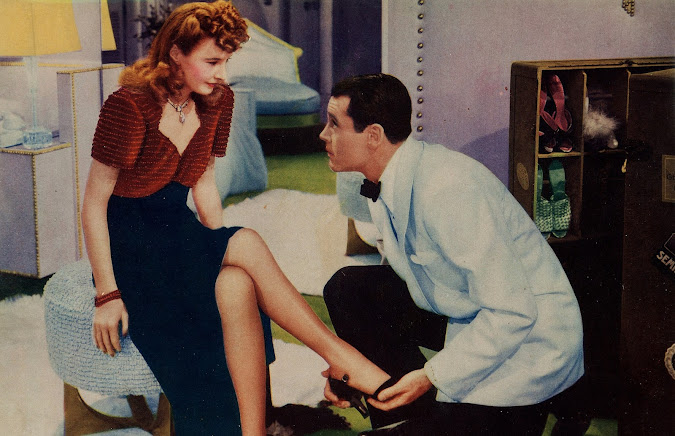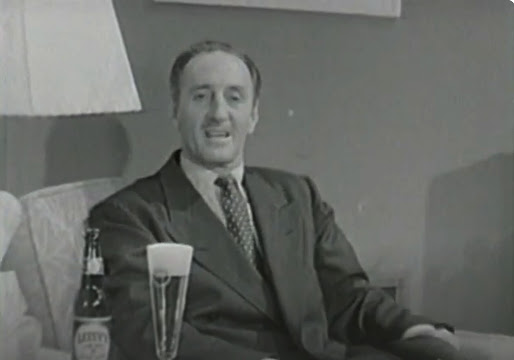Precode Picks #4
Precodes: Anna Christie, The Devil to Pay, Preview to Kong?, and No More Orchids
ANNA CHRISTIE (1930) --- GARBO TALKS! as marquees shouted, but what they should have said was, GARBO TALKS AS THOUGH ON STAGE, which the Anna Christie experience was more/less like, a thing I’d not necessarily knock, as Anna Christie gives us close-as-ever insight to what GG might have amounted to had legit rather than film claimed her. Takes are long, static for that, being 1930 with sound still unaccustomed and customers there to hear Garbo speak and never mind if cameras do anything other than focus dead on her. There is the accent --- everyone knew she'd have it, which was part of fascination, question, if any, whether sense could be made of it. Yes to that, unlike with Vilma Banky or Karl Dane, being unfortunate instances, but they didn’t have Garbo’s magnetism or studio willingness to handle with utmost care. The property was of porcelain pedigree, surefire on stages since Eugene O’Neill penned it to rapturous response. Blanche Sweet had been a silent Anna Christie, but the property needed talk to put power across, for this was sex drama where question was how explicit they would venture toward Anna as woman formerly of the streets who might marry so long as affianced never knows her past. Charles Bickford has persuasive way with growls but fell off Metro payrolls when he growled too at Louis Mayer. Anna Christie did well enough to empower Garbo, already that way for being one star who might get on a boat, sail home (to Sweden), and never look back. She truly could take the career of leave it. Anna Christie is available on Blu-Ray from Warner Archive.
THE DEVIL TO PAY (1931) --- We’re not ten minutes in before Ronald Colman approaches a woman on the street, whom he does not know, and says, “Have no fear for the day … You look divine.” Anyone today who’d intrude upon a stranger with a remark like that might find himself straightaway to police court, but this was 1931 and the man was Ronald Colman, whose voice alone excused whatever liberties he chose to take. I could wish for nerve and panache enough to speak such a line as Colman's, provided I had his voice to speak it. Here is where one recognizes full extent of not being Ronald Colman. Did he offscreen radiate such poise, such assurance? If so, a show-world and otherwise-world surely yielded to his every wish. To simply be Colman was more desired than for him to act as something else, A Double Life disconcerting despite him Academy-awarded for it. The Devil to Pay is Colman as presumed self, a “days in the life …” that we take for mirror of who he was. A whole star system was built upon such illusion, “range” be shunned lest a brand be diminished. People pointed at Parnell as folly for Clark Gable, MGM as instigator, him the goat for yielding. A personality was called that for bearing natural gifts apart from what training could supply. If Colman was nothing like his screen image, then he surely was an actor of remarkable resource. Television robbed movies of primacy by constructing series entirely around personalities and seeing them run years on that single engine. Film stars had not the advantage to show up weekly, closest to that a Clara Bow seen as often as seasons changed, or two-reel comedians, western favorites, served eight times within a year. To tender more might endanger interest in even the most popular names.
REAL LIFE PRECURSOR TO KONG? --- I figured Kong’s stage unveiling for something real life could never hope to approach, but here courtesy the Seattle Post-Intelligencer circa April 20, 1930 is a live attraction “For a Few Days Only” to remind us that Bigger was always Better, especially where the Biggest could be harnessed and put on display for thrill-seekers. What could go wrong? thought Carl Denham when he raised the curtain of Kong, “chrome steel” a safeguard sure as a “Special Glass Enclosed R.R. Car” to contain a 55-foot, 65 ton whale plus presumed offspring at 18 feet and 3 tons. Could mere glass contain such mighty brutes? What if one or both had crashed out? Imagine camera bugs as tactless as those snapping an agitated Kong. We may assume whales did not enjoy being photographed. Picture yourself with nose against the glass for a closest look, and it cracks, loosing leviathans to crush all beneath their massive weight. What of Mama Whale protecting her baby as Kong did Ann Darrow, or Mrs. Gorgo in destructive descent upon London to rescue her young. Is it possible that Kong creatives saw this Seattle spectacle and filed away an idea for their future project? I for one would not have relied upon a sheet of glass, however thick, to shield against two whales in presumed close confinement. Freak attractions were the norm in 1930 and for years before and after. Ask Tod Browning’s cast what it was like to be so exploited. Think too of captive animals brought ashore to amuse gawkers. This sort of thing went on … and on … for so long as hucksters had wildlife or human unfortunates to (unwillingly) prop a show. Remember Herman Cohen hauling “Zamba” the lion into theatre lobbies to promote Black Zoo? Moderns differ from ancient Romans but a sliver it seems.
NO MORE ORCHIDS (1932) --- Caught a chill watching the end of this. Ever had it happen --- when a film intersects uncomfortably with real life, not intended, but based on a future we know but filmmakers could not have? Here (distinct spoiler alert) we have Carole Lombard waving goodbye to dad Walter Connolly as he departs on a plane. What she doesn’t realize is that he’ll pilot the craft smack onto the side of a mountain mere miles off. January 1942 came ten years after No More Orchids was new. Old films often have such stark moments. We sense the father’s sacrifice coming (his bank having failed), but surely things will resolve. This being precode, they don’t. Precode was about more than cocktails and loose sex. Realities were what they’d trade primarily in, likeable characters taking the fall to our surprise, if not always pleasure. Orchid’s story is on one hand a wafer, on the other a thick loaf re life among Depression dwellers barely touched by the Crash, but mindful of how close they are to the precipice. Lombard is a poor (grand)daughter of the rich, fated to marry a Euro prince, who shows up halfway but does not turn out to be a crumb as mere class envy might present him, our hope either way for true love to conquer all (suitable suitor Lyle Talbot not rich, but a better prospect to weather hard times). Gable’s “Peter Warne” of It Happened One Night had plenty such blueprints to follow by 1934, the right-working-guy almost a cliché when Frank Capra and writers got round to it. Capra too had a go with Platinum Blonde the same year as No More Orchids where he’d tread parallel ground. Refreshing in Orchids is older players driving narrative to degree more than customary, Connolly, Louise Closser Hale, also C. Aubrey Smith, who for guilt over tragedy he causes might board a next doomed flight himself. In fact, I envision a panoply of penance in the wake of Orchid’s end title. Seen on TCM in High-Def and highly recommended.



































